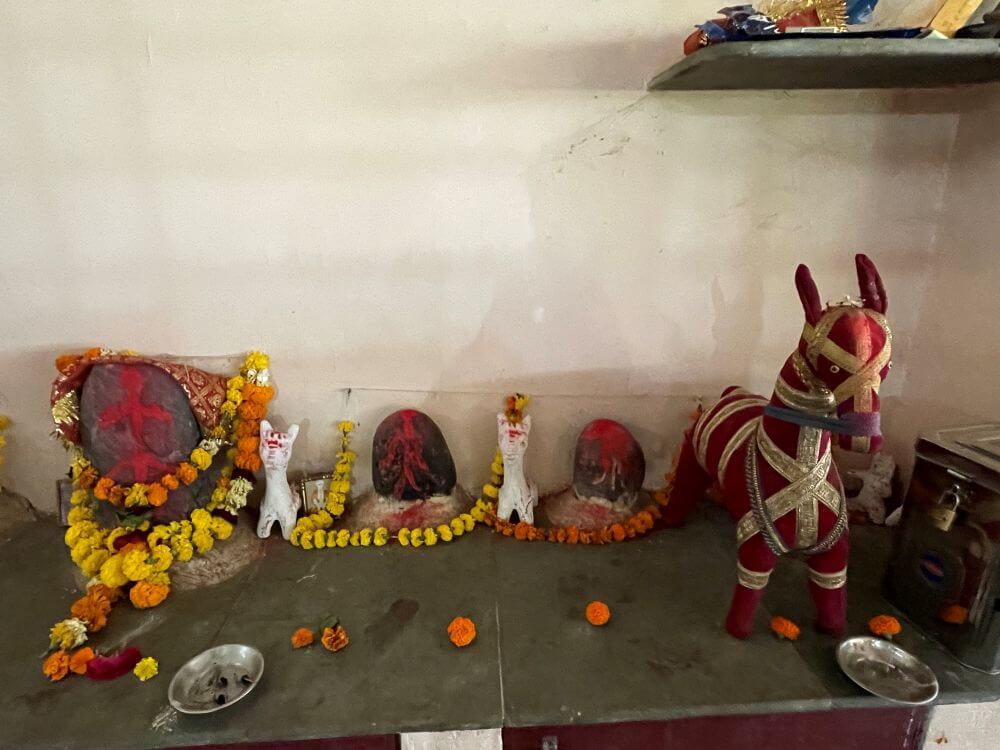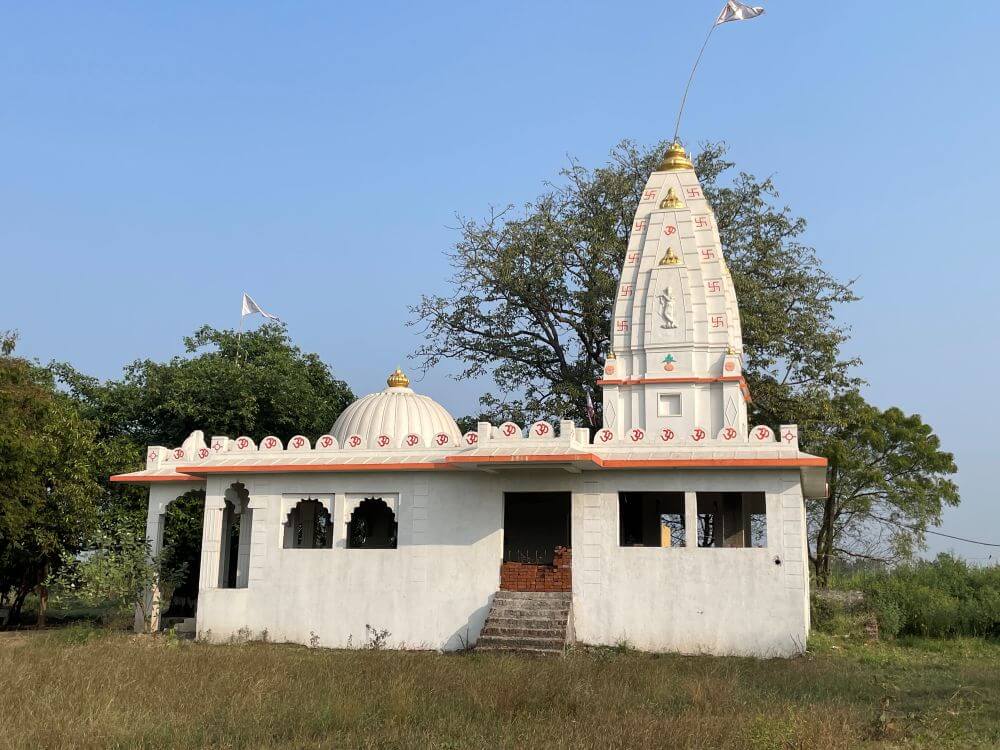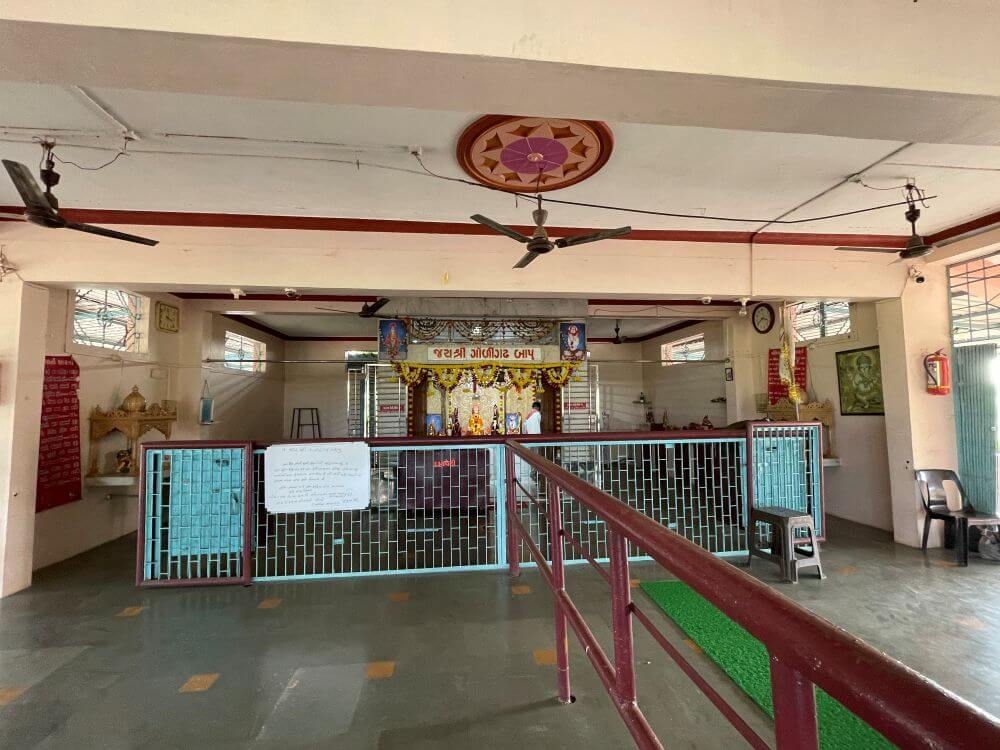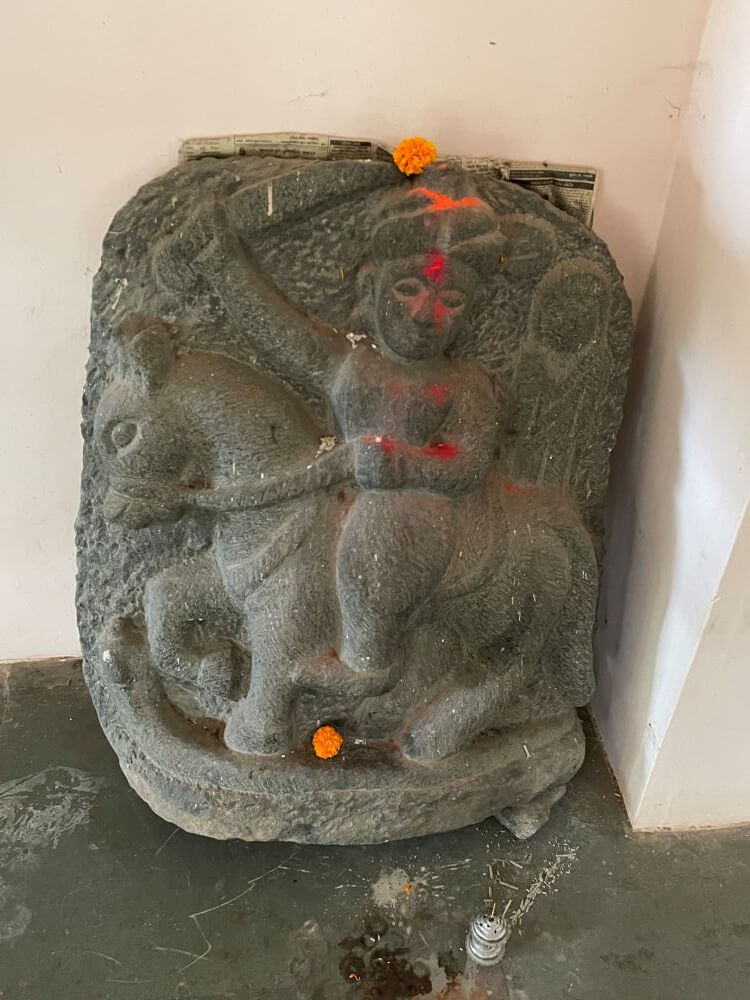 The Goligadh Bapu deity is revered as a divine protector by the tribal community of Mahuva Taluka. Devotees believe that Goligadh Bapu is a wish-fulfilling deity who has the power to cure severe illnesses. As a result, large numbers of devotees gather at the temple to offer prayers and make vows. In addition to Goligadh Bapu, the temple also houses the idol of Mahalakshmi Mata. A short distance from the temple is another shrine, considered the original abode of Goligadh Bapu. Every year, a grand fair known as the Goligadh Yatra is held a week before Holi, drawing thousands of devotees.
The Goligadh Bapu deity is revered as a divine protector by the tribal community of Mahuva Taluka. Devotees believe that Goligadh Bapu is a wish-fulfilling deity who has the power to cure severe illnesses. As a result, large numbers of devotees gather at the temple to offer prayers and make vows. In addition to Goligadh Bapu, the temple also houses the idol of Mahalakshmi Mata. A short distance from the temple is another shrine, considered the original abode of Goligadh Bapu. Every year, a grand fair known as the Goligadh Yatra is held a week before Holi, drawing thousands of devotees.
The town of Mahuva was historically known as Madhukanagar or Madhupuri, famed as a centre of art and learning.  About 10 km from Mahuva, the village of Vanskui is home to the Goligadh Bapu and Mahalakshmi Mata temple. The site is believed to be at least 350 years old. According to the legend, approximately 350 years ago, a devout priest named Sangajibhai Bhanabhai Patel lived in the nearby tribal village of Undan. His household was blessed with abundance, which he attributed to the blessings of his family deity (kuldaivat). He regularly worshipped this deity and was known for his deep piety. Sangajibhai often dreamt of a divine figure, which he believed to be an incarnation of the deity. One day, a group of Vanjaras (nomadic cattle herders) stole his cows and took them to the forest. Trusting the divine figure from his dreams, Sangajibhai made a vow (nawas) to offer milk and curd if his cows were returned. Remarkably, on the Sunday morning before Holi, all his cows were returned safely. Following this miracle,
About 10 km from Mahuva, the village of Vanskui is home to the Goligadh Bapu and Mahalakshmi Mata temple. The site is believed to be at least 350 years old. According to the legend, approximately 350 years ago, a devout priest named Sangajibhai Bhanabhai Patel lived in the nearby tribal village of Undan. His household was blessed with abundance, which he attributed to the blessings of his family deity (kuldaivat). He regularly worshipped this deity and was known for his deep piety. Sangajibhai often dreamt of a divine figure, which he believed to be an incarnation of the deity. One day, a group of Vanjaras (nomadic cattle herders) stole his cows and took them to the forest. Trusting the divine figure from his dreams, Sangajibhai made a vow (nawas) to offer milk and curd if his cows were returned. Remarkably, on the Sunday morning before Holi, all his cows were returned safely. Following this miracle, Sangajibhai organised a grand procession to the site where the divine figure had appeared in his dreams. Digging at the location, he discovered two stones, which he enshrined and worshipped as Mahalakshmi Mata and Goligadh Bapu. In January 1999, the temple underwent renovation, enhancing its historical and spiritual significance.
Sangajibhai organised a grand procession to the site where the divine figure had appeared in his dreams. Digging at the location, he discovered two stones, which he enshrined and worshipped as Mahalakshmi Mata and Goligadh Bapu. In January 1999, the temple underwent renovation, enhancing its historical and spiritual significance.
Located a short distance from the main road of Vanskui, the Goligadh Bapu / Mahalakshmi Temple is marked by a grand entrance archway. At the top of the arch is an idol of Radha-Krishna. The temple is surrounded by a spacious open courtyard. Its structure includes a small porch (osri), an assembly hall (sabhamandap)and a sanctum (garbhagriha). The assembly hall has a flat ceiling, while the sanctum features a Nagara-style spire (shikhara). In front of the hall, there is a large iron-pipe railing to manage queues, especially during festivals and fairs when the temple sees a significant influx of devotees.
In front of the hall, there is a large iron-pipe railing to manage queues, especially during festivals and fairs when the temple sees a significant influx of devotees.
The temple is elevated on a high platform (jagati) and is accessed via a flight of steps. The assembly hall has large windows on both sides and houses the sanctum at its centre. Inside the sanctum, the beautifully decorated makhar (ornamental canopy) holds the standing marble idol of Goligadh Bapu on a high pedestal. Flanking the idol on either side are two horse statues crafted in tribal style. On the right side of the makhar are two sacred stones representing Goligadh Bapu and Mahalakshmi, along with an idol of Goligadh Bapu at the back. On the left side of the makhar are idols of Mahalakshmi and Ram-Sita.
 Outside the sanctum, on the right, there is a small Hanuman idol on a platform. Beside it stands a large stone sculpture of a horse-riding warrior holding a sword. On the left side of the sanctum, an elevated platform holds several stones worshipped as ancestral tribal deities, along with examples of tribal artistry. Among these is a rough-hewn statue of a horse-mounted warrior.
Outside the sanctum, on the right, there is a small Hanuman idol on a platform. Beside it stands a large stone sculpture of a horse-riding warrior holding a sword. On the left side of the sanctum, an elevated platform holds several stones worshipped as ancestral tribal deities, along with examples of tribal artistry. Among these is a rough-hewn statue of a horse-mounted warrior.
A short distance from the main temple lies a quadrangular shrine, considered the original temple (asal mandir) of Goligadh Bapu. This small shrine has a dome at the top and houses a small marble idol of Goligadh Bapu on a central platform. Nearby, there are smaller domes containing two sacred stones and several small clay figurines of human forms. These figurines are offered by devotees after their ailments are cured, symbolising the afflicted part of the body.
According to local legend, Goligadh Bapu had the divine ability to heal illnesses. Using sacred herbs from the forest, he is said to have cured even the most severe diseases. Devotees suffering from ailments, whether physical or mental, come to Goligadh Bapu to make vows (nawas). Once cured, they offer figurines or representations of the afflicted body part at the shrine.
People also pray here for prosperity, childbirth, jobsand even visas for traveling abroad. It is believed that Goligadh Bapu fulfils these wishes. While vows can be made on any day of the year, the custom is to fulfill them specifically on the Sunday before Holi. This has made the annual Goligadh Yatra, held on this day, a major event that attracts a massive gathering of devotees.
